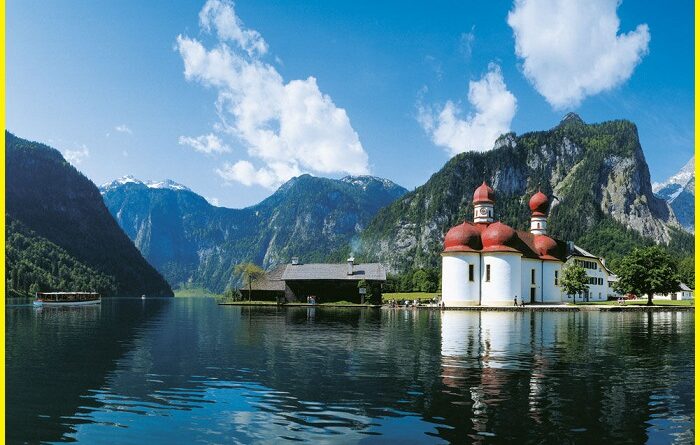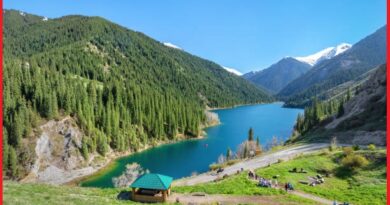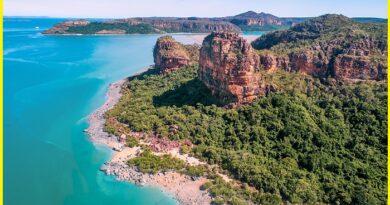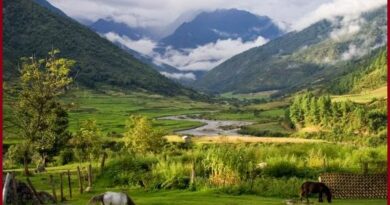Things to do in the picturesque landscape-Berchtesgaden Germany
Berchtesgaden Germany
Berchtesgaden is tucked away in the picturesque countryside of the Bavarian Alps. The Bavarian town is surrounded by beautiful mountains including Watzmann, Germany’s second-highest mountain deep valleys, and sloping hillsides, offering splendid castles, churches, and quaint picturesque houses and buildings. The historic town of Berchtesgaden is located in the district Berchtesgadener Land, Bavaria, in southeastern Germany. It is close to the border with Austria, 30 km south of Salzburg and 180 km southeast of Munich. It lies in the south of the Berchtesgaden National Park and stretches along three parallel valleys. The Kehlstein mountain 1,835 m with its Eagle’s Nest is located in the area and is a must-see location for anyone passing through this part of Europe.
Geography and Geology
Berchtesgaden’s neighbouring towns are Bischofswiesen, Marktschellenberg, Ramsau, and Schonau am Konigssee. The Berchtesgaden Alps are a mountain range of the Northern Limestone Alps. The best-known peak is the Watzmann massif, the third-highest mountain in Germany at 2,713 metres. The range also comprises the Obersalzberg slope east of Berchtesgaden, known for the residence of Adolf Hitler. The picturesque heart is formed by the glacial Königssee lake with the famous St. Bartholomew’s pilgrimage church. The range also comprises glaciers like the Blaueis as well as the Steinernes Meer high karst plateau. Much of Berchtesgaden’s wealth has been derived from its salt mines, the first of which started operations in 1517.
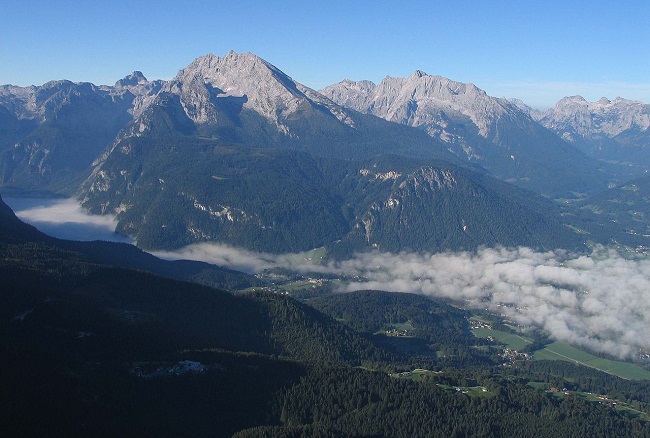
Berchtesgaden Germany things to do
Berchtesgaden Germany offers a wide variety of activities like-luxury spa trips, salt mine visits and lake cruises and even ice cave exploration. The picture-book village of Berchtesgaden, Germany, is full of alpine terrain surrounded on three sides by Austria. The best thing to see here is just to enjoy the charming, mountain-village ambience. Stroll through the winding streets and pastel buildings decorated with “Luftmalerei” paintings. One can browse the wood carvings and Bavarian clothes in the shops and stop at one of the many cafes to enjoy Bavarian specialities and beer, or Kaffee und Kuchen (pastries).
Also read-Bora Bora Island-A Romantic Destination on Volcanic Terrain
Salt Mine Tours
Salzbergwerk Berchtesgaden is the oldest active salt mine in Germany. A miners’ train will take you 650 meters into the mountain itself, where a gigantic salt cathedral with a spectacular miner’s slide awaits. The underground salt lake provides an unforgettable experience beneath the ground. Mining of salt began in Salzbergwerk in 1193 and the mine at the edge of town started operating in 1517. If you’ve never been inside a salt mine, going on this tour is very fun and educational. Salt was the basis of this region’s wealth for centuries. The tour takes you deep inside the mountain into the tunnels. Here visitors can enjoy sliding down a couple of wooden slides the miners used and sailing across an eerie underground lake on a raft.
How salt Form in the Alps
The salt began to form nearly 200 to 250 million years ago, while present-day Austria and Germany were still covered by a gigantic sea. Over time, the waters would evaporate and sediment became deposited on the seafloor. The salt crystallized and sank to the bottom. Oceans had dried up completely over time, these layers were covered by dust and clay. Then, approximately 100 million years ago, the continents shifted, and the Alps unfolded. This in turn created a convoluted mix of salt and rock strata.
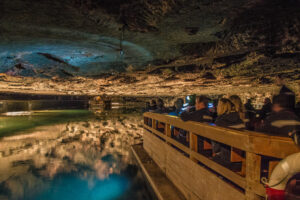
Berchtesgaden National Park
Berchtesgaden National Park is the only National Park in the German Alps with its varied landscapes and breathtaking beauty. Here visitors can experience nature by exploring this unspoiled reserve on well-marked hiking trails. The surrounding area consists of rugged cliffs, deep forests, wild torrents and glaciers, valleys, rare orchids, over 700 different kinds of butterflies and several faunal species. Numerous activities allow visitors to experience this part of the national park. The park was designated a UNESCO Biosphere Reserve in 1990.
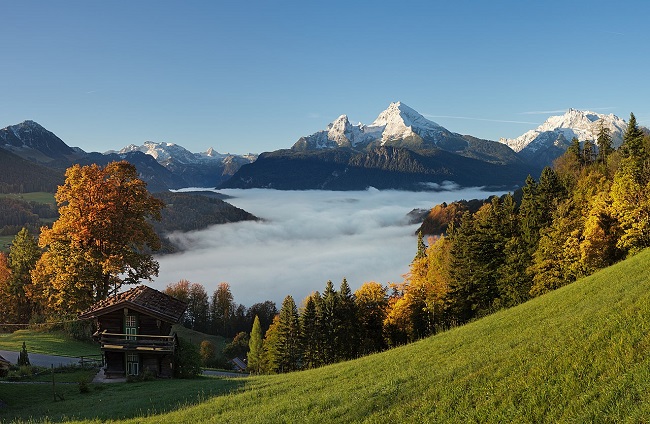
Attractions in Berchtesgaden
This area is blessed with numerous walking trails and crystal-clear mountain lakes like the Konigssee, Obersee and Hintersee. The Tourist Information Office across from the Berchtesgaden train station can provide you with maps of the hiking trails.
Eagles Nest Berchtesgaden (Kelhsteinhaus)
The Eagle’s Nest is Berchtesgaden’s most famous attraction. It was the home to Hitler’s private quarters at the height of the Third Reich. It was the place where Hitler has taken many decisions about politics and the military during the war. The structure is perched atop the high mountain peak of Kehlstein 1834 metres, overlooking the beautiful scenery of Berchtesgaden below. At the top of the eagle nest, there is a restaurant serving traditional Bavarian meals, and an outdoor walkway from where one can see the stunning views of the surrounding Alps and Lake Konigs (Konigssee).
King’s Lake
The King’s Lake (Konigssee) is an emerald fjord lined by powerful Alpine mountains. Nestled in a valley between the Jenner, Hagen, and Watzmann Mountains, Konigssee is Bavaria’s deepest lake at 192 meters deep. One can see lots of Rare species of fish swimming in the 8 km long lake’s crystal clear waters. Tours on the lake take place on electric passenger ferries which pass through lazy boathouses, roaring waterfalls, and lofty mountain faces. one can see here the quaint white Church of St. Bartholoma with its red onion domes which is the most photographed attraction on Königssee Lake. The church was first built in 1134 AD before being rebuilt in the current style in 1697. A long hike above the church leads you to the Ice Chapel, which is a year-round glacier with a natural cave. Rothbach Waterfall, Germany’s tallest waterfall, is located near the place. There are many hiking options from the main Konigssee boat dock. The trail to Malerwinkel is the only path that allows direct access to the lake.
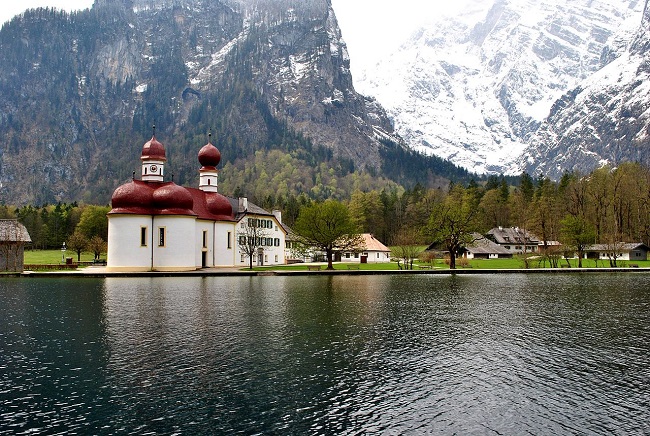
Jenner mountain
Jennerbahn Mountain located at an elevation of 1859 meters is truly the best view around Konigssee. one can feel like they are hovering above the lake below. The mountain has unbelievable mountain hiking trails, in the summer while in the Winter there are a lot of thrilling skiing opportunities. Another popular spot on the mountain is the spring feed Lake, which doesn’t freeze in Winter and provides a great photo of the reflecting mountain tops.
Wimbachklamm Waterfalls
The Wimbach River is a small tributary to the Ramsau. It runs down a narrow gorge cutting into Watzmann Mountain. About a half mile down the Wimbach River it is a narrow wall covered with a series of finger-like waterfalls in a tight canyon setting. The wooden footpaths and the unique setting will make you feel like you are set in Lord of the Rings. It is truly a hidden gem in a region of wonders.

How to Reach Berchtesgaden Germany
The best way to reach Berchtesgaden is to arrive first in Salzburg, Austria, or Munich. Salzburg is the closest city, as it’s just 30 minutes by car or 45 minutes via bus. Bus 840 leaves the Salzburg train station every hour and only takes 50 minutes to reach Berchtesgaden Germany.
